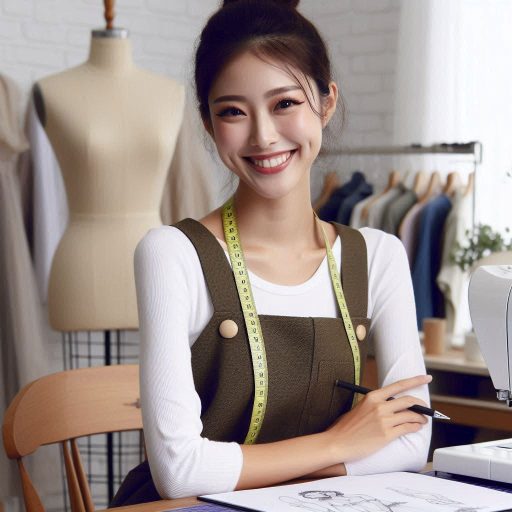Introduction
Historic costume design inspirations draw from various time periods, such as the Renaissance, Victorian era, and Roaring Twenties.
These designs serve as a foundation for modern fashion, influencing trends on the runway and in everyday style.
The popularity of historical costume dramas, like “The Crown” and “Bridgerton,” has revived interest in period fashion.
Viewers are captivated by the intricate details and luxurious fabrics of these costumes, inspiring them to incorporate elements into their own wardrobes.
Importance of Research
Importance of thorough research for accurate historic costume design inspirations
When it comes to designing historic costumes, research is the key to creating authentic and visually striking garments.
Whether working on a period film, theater production, or a fashion collection inspired by the past, a deep understanding of historical references is paramount.
Role of historical references, museums, and archives in finding inspiration
Historical references serve as a treasure trove of inspiration for costume designers.
By studying paintings, photographs, and written accounts from a specific time period, designers can gain valuable insight into the clothing styles, fabrics, colors, and accessories that were popular during that era.
Museums and archives also play a vital role in the research process.
These institutions house rare artifacts and garments from different historical periods, providing designers with the opportunity to examine and draw inspiration from authentic pieces.
Viewing these artifacts up close allows designers to understand the construction techniques, materials, and design details of historic garments.
Additionally, museums often curate exhibitions dedicated to fashion and costume history, showcasing iconic pieces from various eras.
Visiting these exhibitions can spark creativity and offer a deeper appreciation for the craftsmanship and artistry of past fashion designers.
The need to stay true to historical accuracy while incorporating modern elements
When designing historic costumes, it is crucial to balance historical accuracy with a contemporary twist.
While it is essential to recreate the silhouettes and details of a specific period, incorporating modern elements can add a fresh and innovative touch to the design.
By blending historical accuracy with modern sensibilities, designers can create costumes that resonate with contemporary audiences while still paying homage to the past.
This fusion of old and new can result in costumes that are both authentic and visually captivating.
In essence, research is the foundation of successful historic costume design.
By delving into historical references, exploring museums and archives, and striking a balance between tradition and innovation, designers can create costumes that truly bring the past to life.
Read: Costume Design: Tips for New Graduates
Transform Your Career Today
Unlock a personalized career strategy that drives real results. Get tailored advice and a roadmap designed just for you.
Start NowKey Periods in History
Throughout history, various periods have served as a rich source of inspiration for costume designers.
These key historical periods have influenced costume design trends significantly, shaping the way we perceive fashion.
Let‘s delve into some of these influential eras and explore their distinct characteristics that have left a lasting impact on modern fashion.
Key historical periods that have influenced costume design trends
Ancient Egypt
Ancient Egypt is renowned for its opulent and intricate costume designs.
Garments like the iconic Egyptian headdress and embellished jewelry exemplify the grandeur of this era.
The use of luxurious fabrics like linen and silk reflects the sophistication of Ancient Egyptian fashion.
Renaissance Period
The Renaissance era marked a revival of art, culture, and fashion in Europe.
Costumes during this period featured elaborate embroidery, rich fabrics, and voluminous silhouettes.
Inspired by classical art and literature, Renaissance fashion exuded elegance and refinement.
Victorian Era
The Victorian era is characterized by its conservative yet ornate fashion styles.
Women’s attire included corsets, bustles, and intricate lace details, emphasizing modesty and femininity.
Menswear featured tailored suits, top hats, and waistcoats, exuding a sense of formality and sophistication.
Examples of iconic costume designs from different historical eras
From the flamboyant costumes of the Baroque period to the minimalist styles of the 20th century, each historical era has produced iconic costume designs that continue to inspire modern fashion.
Let‘s explore some notable examples:
Baroque Period
The Baroque period was known for its extravagant and theatrical costumes.
Elaborate embroidery, intricate lace, and voluminous silhouettes were hallmarks of Baroque fashion.
Costumes like the elaborate gowns worn by royalty and aristocracy exemplified the grandeur and opulence of this era.
1920s Jazz Age
The 1920s Jazz Age revolutionized fashion with its modern and liberating designs.
Flapper dresses, drop waists, and bold geometric patterns defined the fashion of this era.
Showcase Your Business Today
Reach thousands of readers actively exploring professional services. Publish your business profile and grow your audience now.
Publish NowCelebrities like Josephine Baker popularized the iconic flapper style, embodying the spirit of the Roaring Twenties.
1980s Power Dressing
The 1980s was characterized by power dressing and bold, exaggerated silhouettes.
Shoulder pads, oversized blazers, and neon colors became synonymous with 1980s fashion.
Icons like Princess Diana and Madonna embraced power dressing, influencing a generation of women with their strong and confident style.
Overall, historical costume designs serve as a treasure trove of inspiration for modern fashion designers, blending elements of the past with contemporary trends to create unique and innovative looks.
By understanding the distinct characteristics of each historical period and highlighting iconic costume designs, we can appreciate the rich tapestry of fashion history and its enduring influence on the way we dress today.
Read: The Evolution of Costume Design Techniques
Cultural Influences
Historic costume design is a fascinating and intricate art form that is deeply influenced by cultural elements.
These influences play a crucial role in shaping the designs, styles, and aesthetics of costumes throughout history.
Exploration of Cultural Influences
Cultural influences in historic costume design can be seen in a variety of ways, from the choice of fabrics and colors to the overall silhouette and detailing of a garment.
For example, the rich and vibrant colors of traditional Indian attire have inspired designers to incorporate similar hues into their creations.
Furthermore, the intricate embroidery and embellishments found in Chinese and Japanese traditional attire have also been a significant source of inspiration for designers.
These cultural elements add a unique and artistic flair to historic costume designs, making them visually captivating and culturally rich.
Significance of Cultural Diversity
The significance of cultural diversity in costume design cannot be overstated.
By incorporating elements from various cultures, designers can create costumes that are not only visually stunning but also culturally respectful and inclusive.
Costume design that embraces cultural diversity helps to celebrate the beauty and uniqueness of different traditions and customs.
It also allows for a more comprehensive representation of the world’s diverse cultures, fostering a sense of unity and appreciation for cultural heritage.
Importance of Respecting Cultural Inspirations
Respecting and drawing inspiration from various cultures is essential in historic costume design.
It is crucial for designers to approach cultural influences with sensitivity, understanding, and respect.
By honoring the cultural origins of their inspirations, designers can create costumes that pay homage to the traditions and customs of diverse communities.
This not only ensures that the designs are authentic and meaningful but also fosters a deep appreciation for the beauty and significance of cultural diversity.
In fact, cultural influences play a vital role in shaping historic costume design inspirations.
By exploring, embracing, and respecting the diversity of cultures, designers can create costumes that are not only visually captivating but also culturally rich and meaningful.
Read: Freelance vs. In-House Costume Design Jobs

Iconic Designers
Contributions of Iconic Designers
Iconic designers throughout history have played a significant role in incorporating historic costume design inspirations into their work.
From the extravagant creations of Christian Dior to the avant-garde designs of Alexander McQueen, these designers have brought historical elements to the forefront of fashion.
Designers such as Coco Chanel revolutionized the fashion industry by blending traditional elements with modern silhouettes, creating a timeless aesthetic that continues to influence designers today.
Their innovative approach to incorporating historical costume design inspirations has paved the way for future generations of designers to explore the rich tapestry of the past.
Reinterpreting Historical Fashion
In the world of fashion, designers often look to the past for inspiration when creating new collections.
By reinterpreting historical fashion through a modern lens, designers can breathe new life into traditional styles and bring them into the contemporary landscape.
Designers like John Galliano of Dior have been known to draw inspiration from various historical periods, infusing their creations with intricate details and opulent fabrics that harken back to a bygone era.
By reinterpreting historical fashion, designers can create a dialogue between the past and the present, resulting in visually stunning and culturally relevant pieces.
Famous Designers Known for Historic Costume Design Aesthetics
There are several famous designers known for their historic costume design aesthetics, each bringing their unique perspective to the world of fashion.
Some notable examples include:
- Vivienne Westwood: This iconic British designer is renowned for her punk-inspired creations that often incorporate elements of historical costume design, creating a one-of-a-kind aesthetic.
- Sarah Burton (Alexander McQueen): Following in the footsteps of the legendary Alexander McQueen, Sarah Burton continues to push boundaries with her bold and dramatic designs that draw inspiration from historical references.
- Thom Browne: Known for his avant-garde approach to menswear, Thom Browne merges elements of historical costume design with contemporary tailoring techniques, resulting in impeccably crafted pieces that blur the lines between past and present.
- Gucci (Alessandro Michele): Alessandro Michele has brought a fresh perspective to the iconic Italian fashion house, infusing his collections with a mix of historical references and modern sensibilities that have garnered critical acclaim.
These designers have made significant contributions to the world of fashion by incorporating historic costume design inspirations into their work.
By blending the past with the present, they have created a visual language that speaks to the ongoing dialogue between fashion and history, inspiring generations of designers to come.
Read: Networking Events for Costume Designers
DIY Costume Design
Tips and tricks for incorporating historic costume design inspirations into DIY projects
- Start with simple projects to build your skills.
- Experiment with different fabrics to achieve the right look.
- Add accessories like jewelry or hats for authenticity.
- Consider dyeing or distressing fabrics for a worn-in look.
- Don’t be afraid to mix and match elements from different eras.
Resources for sourcing materials and patterns for historical costumes
- Online fabric stores like Fabric.com or Mood Fabrics.
- Historical costume pattern companies like Simplicity or McCall’s.
- Local fabric stores for unique and specialty fabrics.
- Antique shops for one-of-a-kind vintage accessories.
- Costume rental shops for hard-to-find pieces.
Encouragement to unleash their creativity and experiment with different historical themes
- Try creating a Renaissance-inspired gown or doublet.
- Explore the elegance of Victorian fashion with a bustle dress.
- Embrace the glamour of the Roaring Twenties with a flapper costume.
- Channel the boldness of the 1980s with neon colors and oversized silhouettes.
- Combine elements from different eras to create a unique and personalized costume.
By following these tips and utilizing available resources, readers can create stunning historical costumes that showcase their creativity and attention to detail.
Don’t be afraid to experiment and push the boundaries of traditional costume design!
Delve into the Subject: Tips for Successful Interactive Media Design
Showcase Your Business Today
Reach thousands of readers actively exploring professional services. Publish your business profile and grow your audience now.
Publish NowFashion Trends
With fashion trends constantly evolving, it is fascinating to see how historic costume design has influenced modern-day styles.
Designers often look back at the past for inspiration, creating unique collections that pay homage to various eras.
Current fashion trends that have been inspired by historic costume design
One of the most notable trends inspired by historic costume design is the resurgence of corsets.
Originally popular in the Victorian era, corsets have made a comeback in modern fashion, reinterpreted in various ways by designers.
From runway looks to street style, corsets have become a staple in many wardrobes, creating a fusion of old-world charm and contemporary flair.
How fashion houses and designers reinterpret historical aesthetics for modern collections
Fashion houses and designers often draw inspiration from historic costume design, putting a modern twist on classic styles.
For example, the regency era has influenced recent runway collections, with designers incorporating empire waistlines, puffed sleeves, and delicate fabrics into their designs.
By reinterpreting historical aesthetics, these designers create unique pieces that appeal to a modern audience while paying homage to the past.
Future trends in historic costume design inspirations and their impact on the fashion industry
As we look to the future, it is likely that historic costume design will continue to inspire fashion trends.
With advancements in technology and a growing interest in sustainability, we can expect to see a surge in designers using traditional techniques and materials in their creations.
Additionally, the influence of different eras, such as the roaring 20s or the glamorous 50s, may become more prominent in future collections, reflecting a blend of nostalgia and innovation.
Overall, the impact of historic costume design on the fashion industry is likely to grow, shaping trends and pushing boundaries in the years to come.
By exploring historic costume design inspirations in the context of current fashion trends, we gain a deeper understanding of how the past continues to shape the present and future of the industry.
As designers reinterpret historical aesthetics, they breathe new life into timeless styles, creating a dynamic and ever-evolving landscape of fashion.
See Related Content: How to Create User Personas for UX/UI Design
Conclusion
Historic costume design inspirations can be found in a variety of sources.
From ancient civilizations to the Victorian era, each period offers unique style elements to explore.
Ancient Roman togas symbolize power and elegance, perfect for modern interpretations in formal wear.
The medieval period brings to mind rich fabrics, intricate embroidery, and elaborate headpieces for inspiration.
Renaissance fashion focuses on voluminous sleeves, intricate patterns, and luxurious fabrics like velvet and brocade.
The Baroque era is characterized by opulent embellishments, bold colors, and dramatic silhouettes for a grand statement.
Georgian fashion features Empire waistlines, delicate pastel colors, and intricate lace details for a romantic aesthetic.
The Victorian era is known for high collars, bustles, and layers of fabric, creating a sense of modesty and femininity.
Art Deco style from the 1920s and 1930s offers geometric shapes, metallic accents, and sleek silhouettes for a modern twist.
In conclusion, historic costume design inspirations provide a rich tapestry of styles to draw from.
Exploring these influences can add depth and sophistication to personal style.
The timeless appeal of historic fashion continues to influence contemporary design trends.
Embrace the beauty of the past and let it inspire your present fashion choices.
[E-Books for Sale]
The Big Book of 500 High-Paying Jobs in America: Unlock Your Earning Potential
$19.99 • 500 High-Paying Jobs • 330 pages
Explore 500 high-paying jobs in America and learn how to boost your career, earn more, and achieve success!
See All 500 High-Paying Jobs of this E-Book
1001 Professions Without a Degree: High-Paying American Jobs You Can Start Now
$19.99 • 1001 Professions Without a Degree • 174 pages
Discover 1001 high-paying jobs without a degree! Unlock career tips, skills, and success strategies for just $19.99!




